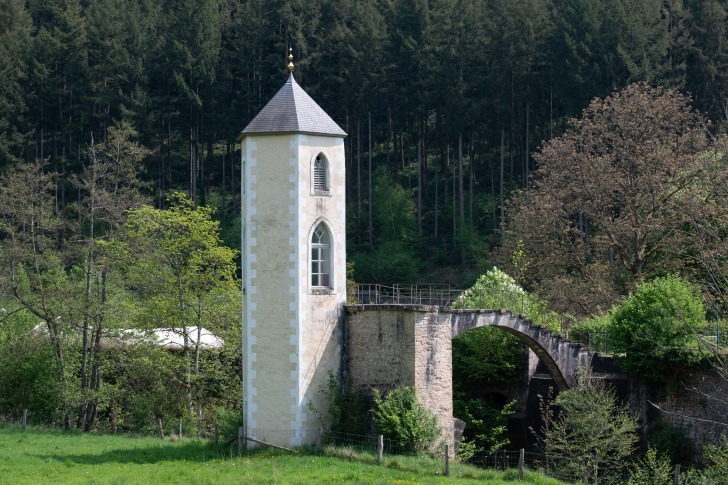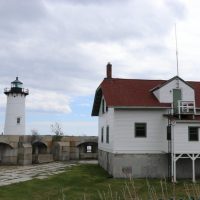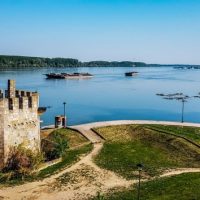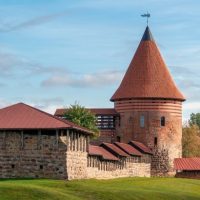At 999 square miles in area, the Grand-Duché de Luxembourg (its official name) in Western Europe ranks slightly smaller than the state of Rhode Island in the United States.
Using a generous count of Luxembourg’s castles, you would find as many as 130.
However, many of them have long ago fallen into ruins or been purposely dismantled, including the original Fortress of Luxembourg itself.
Nevertheless, if possible, anyone touring Luxembourg should visit each of its medieval, Renaissance, and Baroque castles.
Contents
- Ten Most Beautiful Castles in Luxembourg
- Luxembourg Safety Overview
- Frequently Asked Questions
- How many Chateaux de Beaufort exist?
- Why would stamp collectors find the Château de Dommeldange familiar?
- Who began construction of the original Château d'Esch-sur-Sûre?
- What style of architecture does Château de Bettendorf represent, and when was it built?
- How old were the ruins of the original Bourglinster castle?
- Why can't anyone visit Le Vieux Château d'Ansembourg?
- Who owns Le Grand-Château d'Ansembourg?
- What type of construction does the medieval castle at Beaufort represent?
- How old were the ruins of Mersch Castle when Theodoric the First bought them?
- Who built the Renaissance castle at Beaufort?
Ten Most Beautiful Castles in Luxembourg
1 and 2 Les Châteaux des Beaufort: Medieval and Renaissance
Although construction of the medieval Beaufort castle began around 1050, a document from 1192 calls Wauthier (Walter) van Beaufort, Kruisridder, Heer van Wiltz et Beaufort et Celles, its first lord.
In English, his name reads Walter of Beaufort, Crusader, Army of Wiltz, Beaufort, and Celles.
The original fortress used the motte and bailey construction style, meaning a mound (motte) and a stone courtyard surrounded by an outer barrier made from wooden or iron stakes.
Outside this barrier, a deep, wide, defensive ditch — the part we know today as a moat — surrounded the entire fortress.
Next, builders added a stone keep and increased the dimensions of the castle gate sometime between 1100 and 1150.
Johann Baron von Beck, governor of Luxembourg, bought the property in the name of the Spanish king, Philip IV, in 1639.
He began constructing the Renaissance castle behind the original medieval one four years later.
Unfortunately, Johann died in 1648, and his son completed construction a year later.
The Renaissance castle offers guided tours on Thursday through Sunday between April and November, at 11:00 AM and 4:00 PM.
Unfortunately, you cannot tour the Renaissance castle on your own, although you may wander the grounds of the medieval one freely.
Valley of the Seven Castles
You can hike through the Valley of the Seven Castles from the confluence of the Eisch River and the Alzette for 34 miles till you reach Steinfort.
Along the way, in order, you will pass:
- Mersch
- Schoenfels
- Hollenfels
- Ansembourg Castle
- Le Grand-Château d’Ansembourg
- Septfontaines
- Koerich Castle
Each castle in the valley has a distinct architectural style and history.
Several have private owners who expect you to make reservations before you attempt to enter their properties.
Mersch Castle
A document from 1232 mentioned a turris: a tower usually seen at intervals along the walls of a fortress.
The paper also stated that Theodoric I, Lord of Mersch, bought the original fortification, including the tower ruins.
Historians assume the ruins belonged to the court of Nithardus, one of Charlemagne’s grandsons.
Thus, the ruins were at least 388 years old when Theodoric I took over the castle grounds.
The outer walls arced, so the four corner towers made a rounded square.
These walls surrounded a square keep whose dimensions were 12 feet long by 17 feet tall.
Since it lay in ruins, Lord Theodoric the First built a new castle and surrounding moat.
However, the Burgundian soldiers burned it to the ground after a siege.
No one constructed a new castle until 1574 when the owners planned a 61-by-70-meter court that included seven towers and had walls 1.35 meters thick.
In 1585, Paul von der Veltz added the windows you see today.
Inside, intricate carvings and bas reliefs on the walls and vaulted ceilings provide a glimpse into the beauty of the architecture of that era.
Le Grand-Château d’Ansembourg
As the newer of the two Ansembourg castles, Le Grand-Château belongs to the Japanese religious organization Sukiyo Mahikari, which has done significant restoration since acquiring the property in 1987.
Although you cannot tour the inside, you may freely wander throughout the terraced Baroque gardens, which were initially designed and built between 1730 and 1750.
The grounds include the restored Staircase of Honor, a walkway of marble statues, a maze, and ornamental fountains.
Le Vieux Château d’Ansembourg
The first historical record to mention the old castle dates from 1135.
The old castle sits on a hill above the Grand-Château and does not allow visitors on the grounds or inside because Gaston-Gaëtan, Count de Marchant et d’Ansembourg, and his wife, Marina, Countess de Marchant et d’Ansembourg, live in it.
However, in 2011, the Count de Marchant et d’Ansembourg opened an exclusive boutique hotel Temps d’Or Hotel Luxembourg.
The hotel no longer caters to guests, unfortunately. Instead, it now operates as an upscale Airbnb.
Bourglinster Castle
Although no one knows who built the original Bourglinster castle or when construction began, it already lay in ruins as of 1098.
A new court — complete with a tower, sanctuary, and defensive wall — had already replaced it.
In 1231, Countess Ermesinde of Luxembourg presented the castle and grounds to Beatrice Linster and Thierry de Fontoy, Seneschal of Luxembourg.
Sometime after 1250, construction began on the north tower keep, and the chapel received some refurbishment.
The lower castle, called the House of Waldeck, dates from the late 14th through early 15th centuries.
Waldeck included a moat, strengthened gates, and two towers.
The Troops of Charles V and Francis I destroyed most of the upper and lower castles in 1544.
Consequently, in 1548, the Orley family added the southern Renaissance-style wing.
Unfortunately, the lower castle suffered extensive damage again between 1682 and 1684.
Sometime after 1725, builders added the baroque facade at the rear of the courtyard.
The Luxembourg State took ownership in 1968.
From 1968 through 1988, the state began repairing, consolidating, and restoring the castle and outbuildings.
In 1982, the “Friends of Bourglinster Castle” organized the Bourglinster Music Festival and turned the barns into art studios.
Château de Bettendorf
Although you can enjoy this 1728 Baroque castle from the outside, you cannot enter the grounds or the castle itself.
The original castle dates from the 13th century, however, although no trace of it remains.
The castle’s private owners have not opted to open the building to the public since its restoration in 1962.
Château d’Esch-sur-Sûre
According to the earliest written records, a man named Maingaud and his wife Hiletrude from the Abbey in Stavelot dug the castle foundation in 927.
The Romanesque tower stood eight meters square and included a surrounding farm with the necessary outbuildings.
In the 13th century, the last two Counts of Esch added Gothic architecture when they enlarged the chateau.
Then, in the 15th century, the invention of gunpowder meant that the castle required a 450-meter wall surrounding the village and its keep.
So builders also added two defensive towers; a round watchtower called a Lochturm, the entry gate, and stables in that same period.
In 1685, soldiers from the army of Louis XIV vandalized the castle but left the outer wall undamaged.
As a result, commoners moved into the ruins, and families still lived there when Victor Hugo toured the village in 1871.
Martin Riano d’Hutzt paid the State of Luxembourg 1,000 francs for the ruins in 1902 and rebuilt the chapel by 1906.
In 2005, the property returned to state ownership, and restoration began on the castle and chapel again.
Château de Dommeldange
Forge operator Thomas Marchant built the castle in the 1700s.
Another forge operator, Charles Collet, lived in the court in 1870.
The State of Luxembourg bought the property in 1973.
Stamp collectors might recognize Château de Dommeldange from one of the two Europa series stamps issued on May 9, 2017, by the state of Luxembourg.
Although withdrawn due to a printing error, the stamp depicts the front of the castle, which currently houses the Chinese Embassy.
Château de Heisdorf
Construction of the oldest part of this castle began sometime between 940 and 1000.
Moreover, the ruins of this original castle and keep existed until 2006.
However, Johann Baron von Beck, governor of Luxembourg, who also built the Renaissance castle in Beaufort, bought the Château de Heisdorf in 1639 and built a new castle consisting of three wings.
In 1878, banker and Luxembourg consul to Amsterdam Leon, Baron von Lippmann, and his wife Lina bought von Beck’s castle. In 1883, however, Baron von Lippmann died.
His widow commissioned the new Château de Heisdorf, designed by architect Charles Thirion.
This Château de Rambouillet-inspired building had only two wings, set at right angles to each other, connected by a square tower.
However, the end of the Alzette side had a round tower topped by a dome and spire.
Currently, the Sisters of Christian Doctrine own the castle, which they run as a retirement home.
Luxembourg Safety Overview
READ THE FULL REPORT: Luxembourg Safety Review
Safety Index:
- OVERALL RISK: LOW
- TRANSPORT & TAXIS RISK: LOW
- PICKPOCKETS RISK: LOW
- NATURAL DISASTERS RISK: LOW
- MUGGING RISK: LOW
- TERRORISM RISK: LOW
- SCAMS RISK: LOW
- WOMEN TRAVELERS RISK: LOW
Frequently Asked Questions
How many Chateaux de Beaufort exist?
Two: you will find one medieval and one Renaissance castle at Beaufort.
Why would stamp collectors find the Château de Dommeldange familiar?
Although withdrawn due to a printing error, one of the two Europa series stamps issued on May 9, 2017, by the State of Luxembourg, depicts the front of the castle, which currently houses the Chinese Embassy.
Who began construction of the original Château d'Esch-sur-Sûre?
According to the earliest written records, a man named Maingaud and his wife Hiletrude from the Abbey in Stavelot dug the castle foundation in 927.
What style of architecture does Château de Bettendorf represent, and when was it built?
Unfortunately, although you can enjoy this 1728 Baroque castle from the outside, you cannot enter the grounds or the castle itself.
The original castle dates from the 13th century, however, although no trace of it remains.
How old were the ruins of the original Bourglinster castle?
It already lay in ruins as of 1098.
A new court — complete with a tower, sanctuary, and defensive wall — replaced it.
Why can't anyone visit Le Vieux Château d'Ansembourg?
The Grand-Château does not allow visitors on the grounds or inside the castle because Gaston-Gaëtan, Count de Marchant et d’Ansembourg, and his wife, Marina, Countess de Marchant et d’Ansembourg, live in it.
Who owns Le Grand-Château d'Ansembourg?
The Japanese religious organization Sukiyo Mahikari currently owns it.
Although you cannot tour the inside, you may freely wander throughout the terraced Baroque gardens.
What type of construction does the medieval castle at Beaufort represent?
The original fortress used the motte and bailey construction style.
How old were the ruins of Mersch Castle when Theodoric the First bought them?
The ruins were at least 388 years old.
Who built the Renaissance castle at Beaufort?
Johann Baron von Beck, governor of Luxembourg, began building in 1641.











